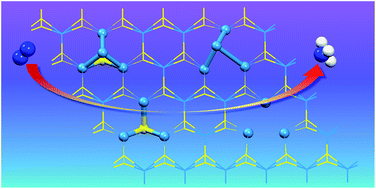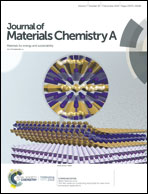Activated basal planes of WS2 by intrinsic defects as catalysts for the electrocatalytic nitrogen reduction reaction†
Abstract
The ever-increasing demand for ammonia requires more advanced atomic catalysts with high-activity and high-loading active sites for the electrocatalytic nitrogen reduction reaction (NRR). Owing to the “accept and backdonate mechanism”, transition metal (TM) atoms are the preferred active sites. However, because of the fast self-nucleation of TM heteroatoms, the loading of active TM heteroatoms is relatively low. Thus, the research on intrinsic TM active sites is significant. Herein, using density functional theory calculations, intrinsic defects in the basal plane of WS2, including vacancy defects and antisite defects, were created with high-loading TM active sites for boosting NRR. As expected, antisite WS with one W atom replacing one S atom could catalyze NRR with a low potential of −0.24 V versus a reversible hydrogen electrode.



 Please wait while we load your content...
Please wait while we load your content...